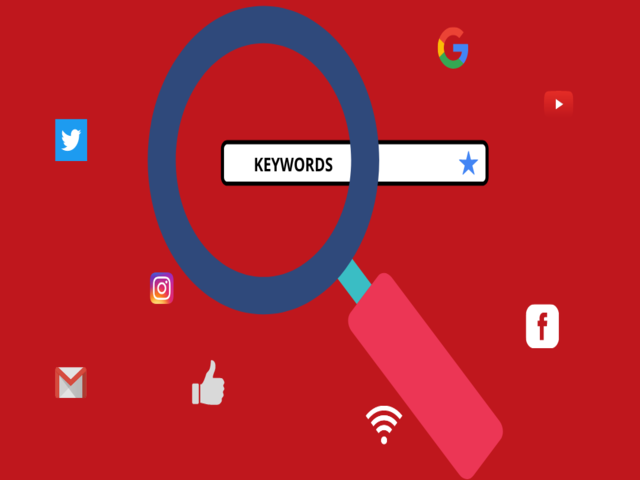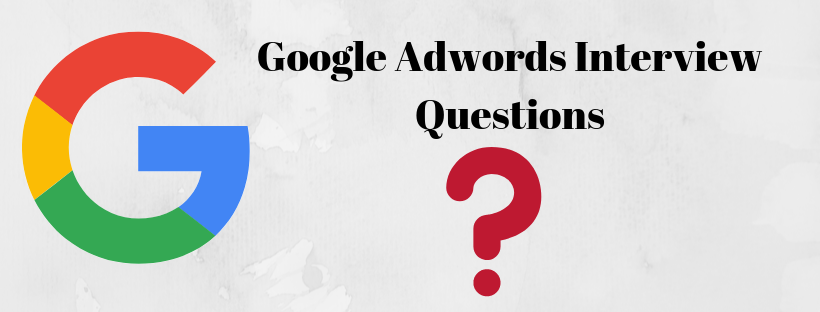Today, modern marketing is based on ranking a website high up in Google. Your blog post needs to be exciting and shareable to rank your blogs on search engines like Google and drive thousands of visitors to your blog.
In this article, you will learn how to write a blog post that ranks on Google. A question that many people get asked is how does one goes about writing great blog posts that rank on Google. As with anything, it takes to research and practice, and patience to truly become a master at building a solid reputation online for your brand.
Many people think they can write an article and post it on their site, and then they’re going to get all these fantastic results from it. That might be true a little bit, but in reality, the way these things work nowadays is a lot more complicated than that.
Suitable titles, tags, Consistency, keyword density, length can help you put your site on the Google radar. It will help you to improve both your blog traffic as well as ranking on Google.
A well-written blog post can rank well on Google and drive traffic towards your website. Make sure you have a regularly updated blog with a new post so you can start ranking well.
1. Choose the Right Keywords

Keyword research is the first step in identifying the topics you will be writing. Why? Because starting with the wrong keyword makes it ten times harder to rank well. It’s an essential step in any effective content promotion strategy.
Please find critical terms with high search volume, low competition, and a level of specificity that allows you to create great content around it.
Most business owners underestimate the importance of keyword research. Keyword Research is the most important SEO factor for any business. You can’t ignore this task because you will miss out on a lot of potential traffic.
For example, if you run a booking site, you need to know which keywords are related to your industry (e.g. beaches, holidays, somewhere to stay). If you book flights, then related keywords would be holidays and plane tickets.
You can learn the steps associated with keyword research with primary and secondary keywords using different methods such as free and paid software.
Primary Keywords: Primary keywords are the main terms you would like people to associate with your product. These are the terms that you want to appear in both your title tags and your body copy.
Secondary Keywords: Secondary keywords are related to your primary keywords but not nearly as important. For example, let’s say I sell leather briefcases. “Leather Briefcase” may be a primary keyword: “Black Leather Briefcase” or “Executive Leather Briefcase” may be secondary keywords.”
Here are some of the free keyword tools that can help you find relevant keywords:
- Google Trends
- Keywords Everywhere
- Google Search Console;
- Google Autosuggest
- Kwfinder.com
Different kinds of Keywords can help your blog or website rank higher on the Search Engine.
LONG-TAIL KEYWORDS:
Includes 4-5 words.
Characteristics: Low search volume, low competitive rate, specific search intent, high conversion rate; use this for targeted pages, especially product pages and blog posts.
Example – Buy Breathable Running Socks.
SHORT-TAIL KEYWORDS:
Includes 1-2 words.
Characteristics: High search volume, high competitive rate, broad search intent, low conversion rate; use it as a theme keyword that appears consistently throughout your website.
Example – Buy Socks.
TRANSACTIONAL KEYWORDS:
These keywords are when the user is trying to find a site to purchase something.
Characteristics: Low search volume, moderate competitive rate, specific search intent, high conversion rate; critical for e-commerce business and delivery-based business.
Example – Buy Socks Online.
GEO-TAG KEYWORDS:
Gives you results as per your location.
Characteristics: Low search volume, low competitive rate, specific search intent, high conversion rate; critical for local business and delivery-based business.
Example – Socks Near Me.
LSI KEYWORDS:
Latent Semantic Indexing are suggestion keywords that the search engine shows when trying to find something.
Characteristics: Low search volume, low competitive rate, specific search intent, high conversion rate, boost the ranking signal for the main keyword, and suitable content creation.
Example – Buy Socks In Bulk, Buy Socks In Wholesale.
2. HOW CAN YOU WIN THE RACE FROM YOUR COMPETITORS?
There are many products in the market that you and your competitors might have been using. It starts with understanding how your customers solve problems and how your product or service can solve them better. Let’s see how do you differentiate your product from the competitors:
STAGE 1: MAKE A LIST OF YOUR COMPETITORS
Before you enter into the race, you will need to choose your competitors first. And you will need to choose them correctly.
A wrong choice will cause you to race against the guys who aren’t even chipping away at your target audience. Meanwhile, your actual competitors will rake in money without even knowing you exist.
Choose your battles wisely, or you’ll waste your time and resources!
How do you know if you’ve hit the mark or not?
When you check which website or which competitor ranks highest as per your related keywords, Stay Calm, and don’t try to add every website on Page 1 of the Search Engine in your competitor list. We can’t expose through a manual search for one or two keywords.
You will need to comb through all the high-ranking sites to find the ones that stand in the way of your goals. And that’s a lot of work.
STAGE 2: ANALYZE YOUR COMPETITORS’ SEO STRENGTHS & WEAKNESSES
The next step includes an analysis of your competitors’ websites.
What can you gain from that?
As it happens, there’s plenty you can find and use to your advantage. Let’s look closer at each point.
KEYWORDS
Most SEO tools let you scan your competitors’ sites and find out the keywords for their optimization. What can you do with this information?
Keywords could be a positive or negative point both. It just depends on how your competitor uses them.
If your competitor doesn’t rank well enough for some of their keywords, you could do a better job by using them yourself.
Put:
- If a competitor ranks well for keyword X, it’s a sign that it won’t be easy to outrank them for X.
- If a competitor ranks poorly for keyword Y, try using Y on your site and rank better for it.
BACKLINKS

There are two big reasons to pursue backlinks: to drive extra user traffic from other websites and show the search engines that your website deserves a high-ranking position.
You want to make sure your backlinks aren’t spammy and come from reputable sources.
BRAND MENTIONS
Unlinked mentions aren’t as powerful as backlinks, but they perform a similar role: strengthening a website’s online presence.
Note that “strengthening” doesn’t necessarily mean “improving.” If somebody says terrible things about your site, it becomes better known, but not in a good way – as opposed to staying obscure.
Make sure to earn a good reputation from positive mentions from the people or users. Your competitors most likely have.
Monitoring your online mentions helps you manage your reputation.
How do tracking measures of your competitors help you?
It is simple: you need to keep an ear to the ground, which gives you opportunities to get mentioned on the same websites.
One tool that could be of great help for you is Google Alerts. The setting of Google Alerts will help you find the most relevant mentions you need from anywhere in the world. It will directly send the results to your email regularly.
STAGE 3: THE REAL FIGHT BEGINS
Wholesome SEO implies reinforcing your website’s position on all fronts. That’s how you beat your competitors, after all.
Where you could start apply your efforts? That would be the departments where you are most lacking – or, even better, where your opponents are lacking.
You’ve collected all this information about their SEO. So, use every opening you can see to strike!
CREATE AN OUTLINE BEFORE YOU WRITE YOUR BLOG:
When you’re writing a long cornerstone content, you tend to get lost in words or step out of scope. To keep your content relevant and to the point, create an outline before you start writing.
This outline can be relatively infrequent, but it should include your blog posts’ structure and the overall points as well you want to make.
Here, you can include the points you have made from researching your competition or any read you did. A blog post template for list-based articles could be like this:
HEADLINE: It would be best if you spend some time brainstorming different ideas until you land on a good one.
INTRODUCTION: Introduce 2-3 short paragraphs along with your primary keyword in the article. Make sure the reader knows that their questions will not have remained unanswered.
TABLE OF CONTENTS: If you’re writing a long guide, consider adding a table of contents with jump links to make it easier for your readers to navigate.
H2: Followed by a few sentences introducing your list. You can use your primary keyword again so that the chances of getting a higher rank in the Search Engine might occur.
H3’s: Here’s the meat of your article. Include 2 – 4 paragraphs under each H3. You can use 2-3 Sentences in each of those paragraphs. Please make sure the sections are sequenced in a logical order and are written so that the audience finds them easy to understand.
H2: CONCLUSION: Now, this can be short and sweet but include a call to action — i.e., whatever you want your reader to do next.
You will make it easier for yourself if you can gather your thoughts and create an outline. This way, you will stay organized and be more clearer about your ideas.
CONCLUSION:
Maybe you’ve been working hard to improve search results but haven’t actively promoted your blog posts. If you’re serious about your writing, So, don’t just write. It would be best if you promoted it as well. So start working smarter, not harder, with your content marketing.
It’s essential to keep improving your site content. Content marketing is a strategic way to brand your product, convey thought leadership and position yourself as an authority in your industry.
A blogger who has achieved massive traction once said that if you want to gain enormous traction with your blog posts, spend 20% in writing and 80% in promoting. By focusing on the user and long-tail keywords, you’ll see a massive boost in organic traffic. Google is passionate about users and will reward websites that do an excellent job of reaching users.
BONUS TIP:
To appear high on Google, you need high-quality backlinks. The more backlinks you have from credible sources, the better your search engine optimization. Having links from sites with a high domain authority will help you gain a higher domain authority score.




